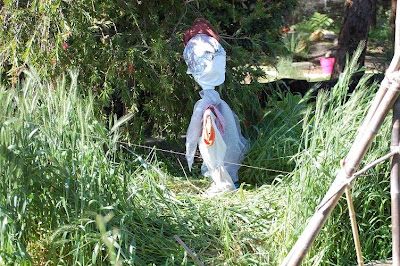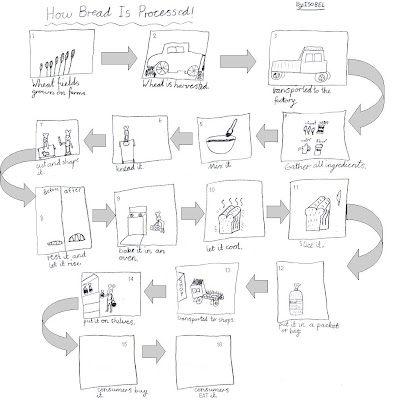
The first challenge was to source some grain to grow and a parent with farm connections came to the rescue. Next was the big question of when to plant! and while there were a lot of different theories it was discovered that Australian wheat needs the cold of winter to germinate so on the 13th May the grains were planted in tidy rows.
Seven days later we had growth tips!
Click on the following thumbnails to see how the wheat looked after 7, 13, 42 and 85 days.




Just when we were counting on a bumper crop we had a visitor to our wheat field!

In fact many visitors arrived one afternoon to install a scarecrow. The intention was good: to protect the crop from harm. Birds will often eat grains before they have a chance to germinate and young shoots are often eaten by kangaroos, reducing the size of the harvest a farmer might get. Out ELA crop was unlikely to be threatened by kangaroos and seemed to have survived the birds too but it was not so lucky with the many enthusiastic feet that trampelled over it to install the scarecrow.

Farmers also risk having their crops flattened in the course of it's growth. If cattle get in to a crop from adjoining paddocks they can trample the wheat. Summer hail storms have been known to flatten and ruin crops just before they are ready for harvest which can be very disappointing for the farmer.
We were disappointed to see much of our crop flattened but the stalks that remained upright continued to ripen and by November we had lovely golden grains ready to pick.


The original plan was to process the grains to make flour and then use the flour to make bread with Kindergarten. While we were offered use of a mill that would turn grains into flour we have not yet devised a way to thresh our wheat heads and turn them into grains.
Stay tuned.

In March 2009, Year 4 learnt about where bread comes from and how it's made. They made pretzels in class as part of the lesson. Here is a drawing showing how bread is processed:

Activity: Draw the last two steps in the process.